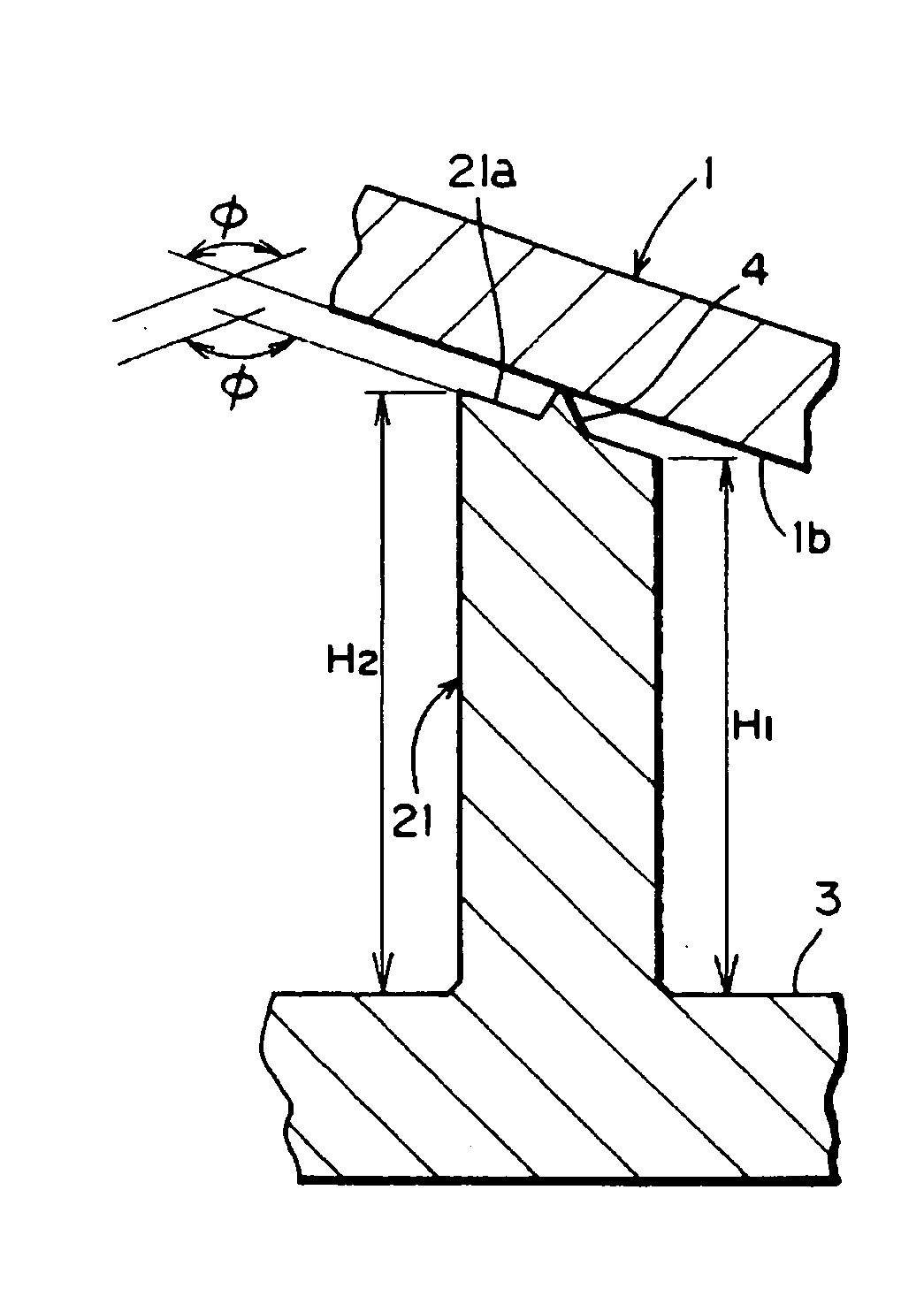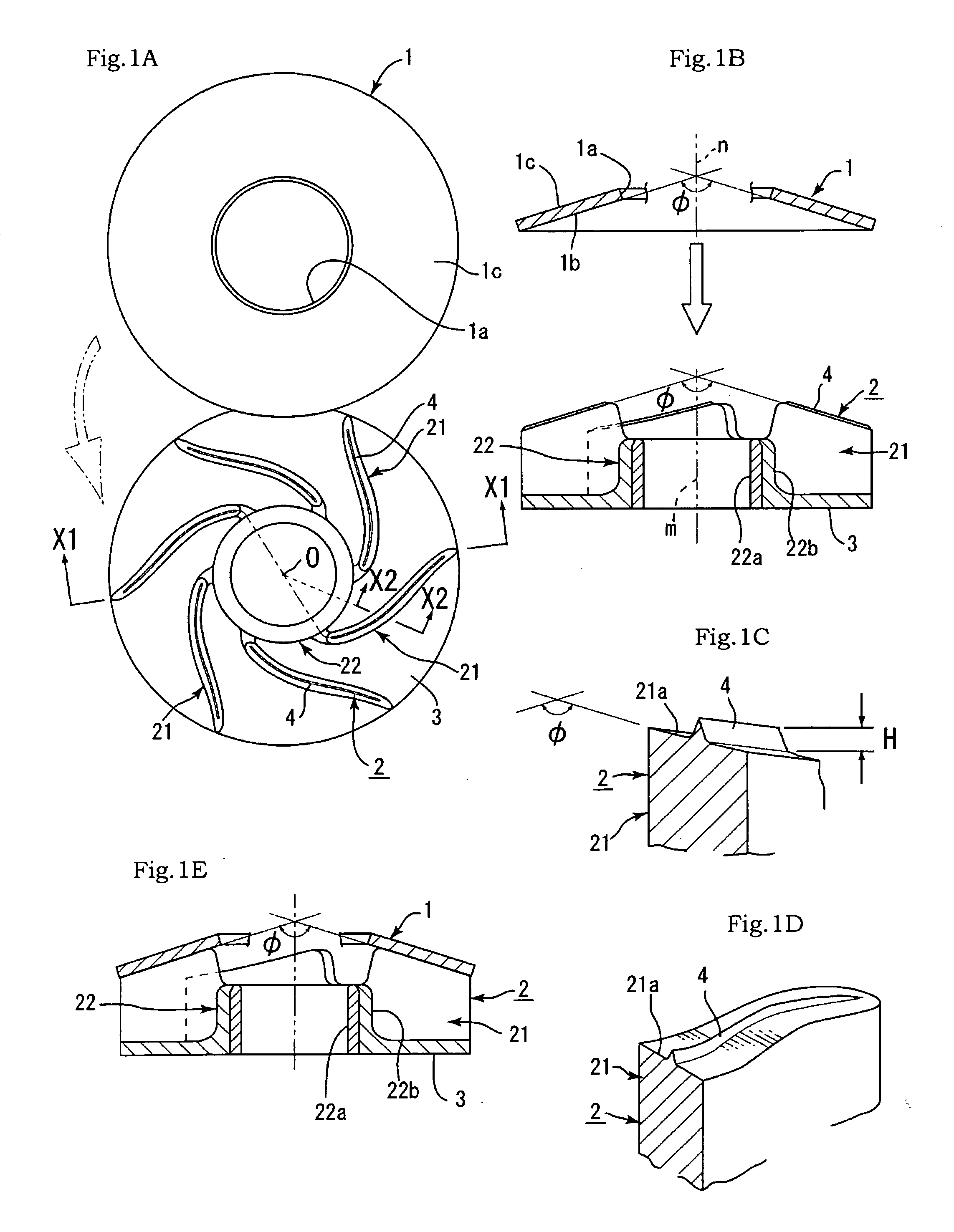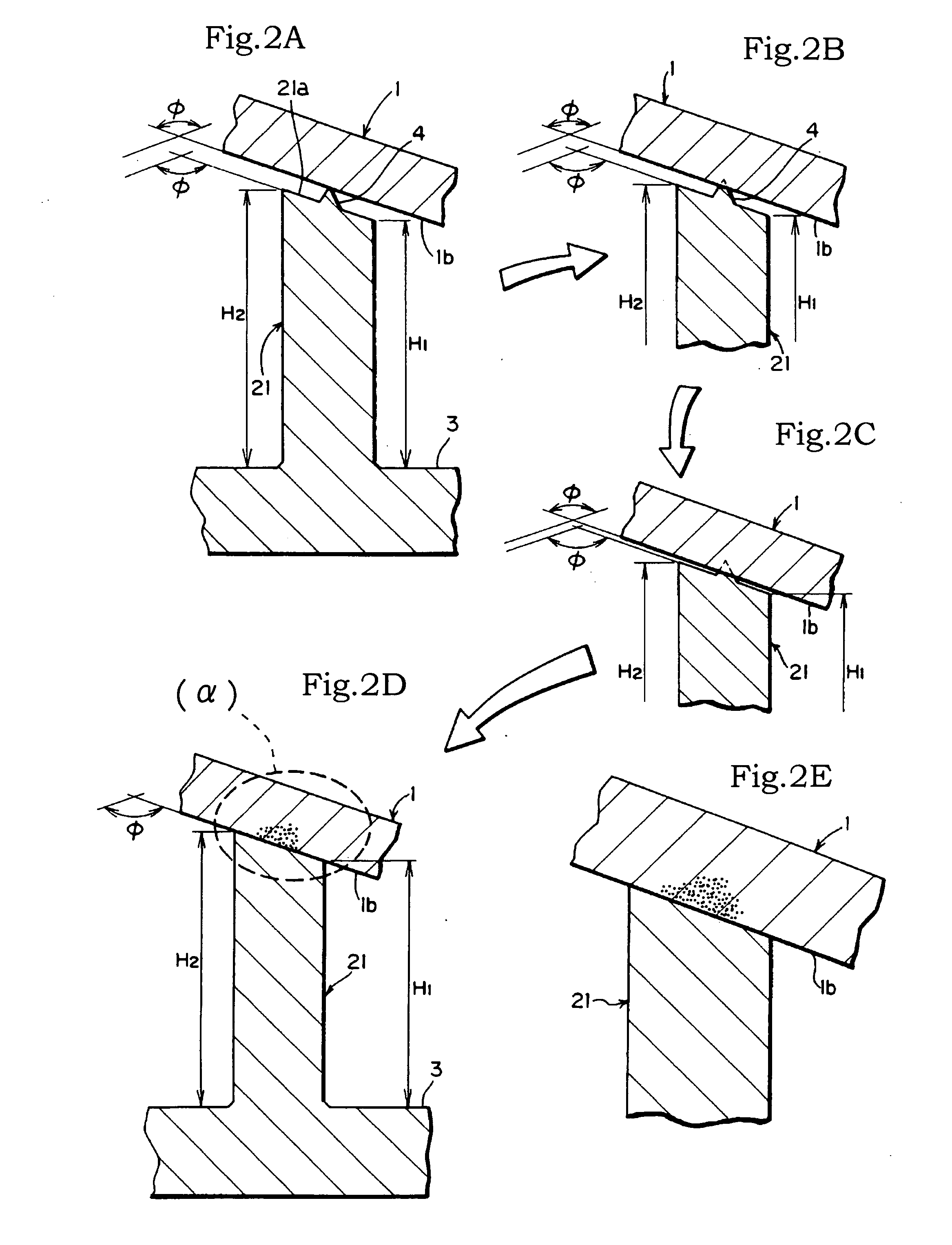Method for manufacturing closed impeller
a manufacturing method and closed technology, applied in the direction of machines/engines, other domestic objects, liquid fuel engines, etc., can solve the problems of relative displacement of the two members, the impeller itself does not provide any means of inhibiting displacement, and the members cannot be pressed together by a large force, etc., to achieve accurate fused to the center, easy to fuse, and simple
- Summary
- Abstract
- Description
- Claims
- Application Information
AI Technical Summary
Benefits of technology
Problems solved by technology
Method used
Image
Examples
Embodiment Construction
[0039]Embodiments of the present invention will be described below with reference to FIGS. 1 to 6. In the figures, the reference numeral 1 stands for a front plate that is an annular plate of a frustum shape (horn shape). In the cross-sectional view, the front plate is a disk (ring) having an open round hole 1a in the center and forming a convexity that narrows upward with respect to a vertical central axis n and has a height that decreases towards the outer periphery. The thickness of the front plate is about 1 to 2 mm and the material thereof is a synthetic resin. In the first embodiment, the front plate 1 is an annular plate of a flat horn shape obtained by cutting off the head section of any cone. In other words, in the first embodiment, a cone-shaped type is explained. The cone apex angle (also called “steric angle”) in the virtual apex location of an inner surface 1b (lower side in FIG. 1B) of the cone surface of the front plate 1 is denoted by φ (see FIG. 1B).
[0040]The refere...
PUM
| Property | Measurement | Unit |
|---|---|---|
| Force | aaaaa | aaaaa |
| Angle | aaaaa | aaaaa |
| Shape | aaaaa | aaaaa |
Abstract
Description
Claims
Application Information
 Login to View More
Login to View More - R&D
- Intellectual Property
- Life Sciences
- Materials
- Tech Scout
- Unparalleled Data Quality
- Higher Quality Content
- 60% Fewer Hallucinations
Browse by: Latest US Patents, China's latest patents, Technical Efficacy Thesaurus, Application Domain, Technology Topic, Popular Technical Reports.
© 2025 PatSnap. All rights reserved.Legal|Privacy policy|Modern Slavery Act Transparency Statement|Sitemap|About US| Contact US: help@patsnap.com



